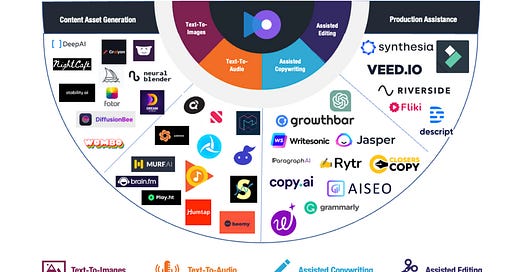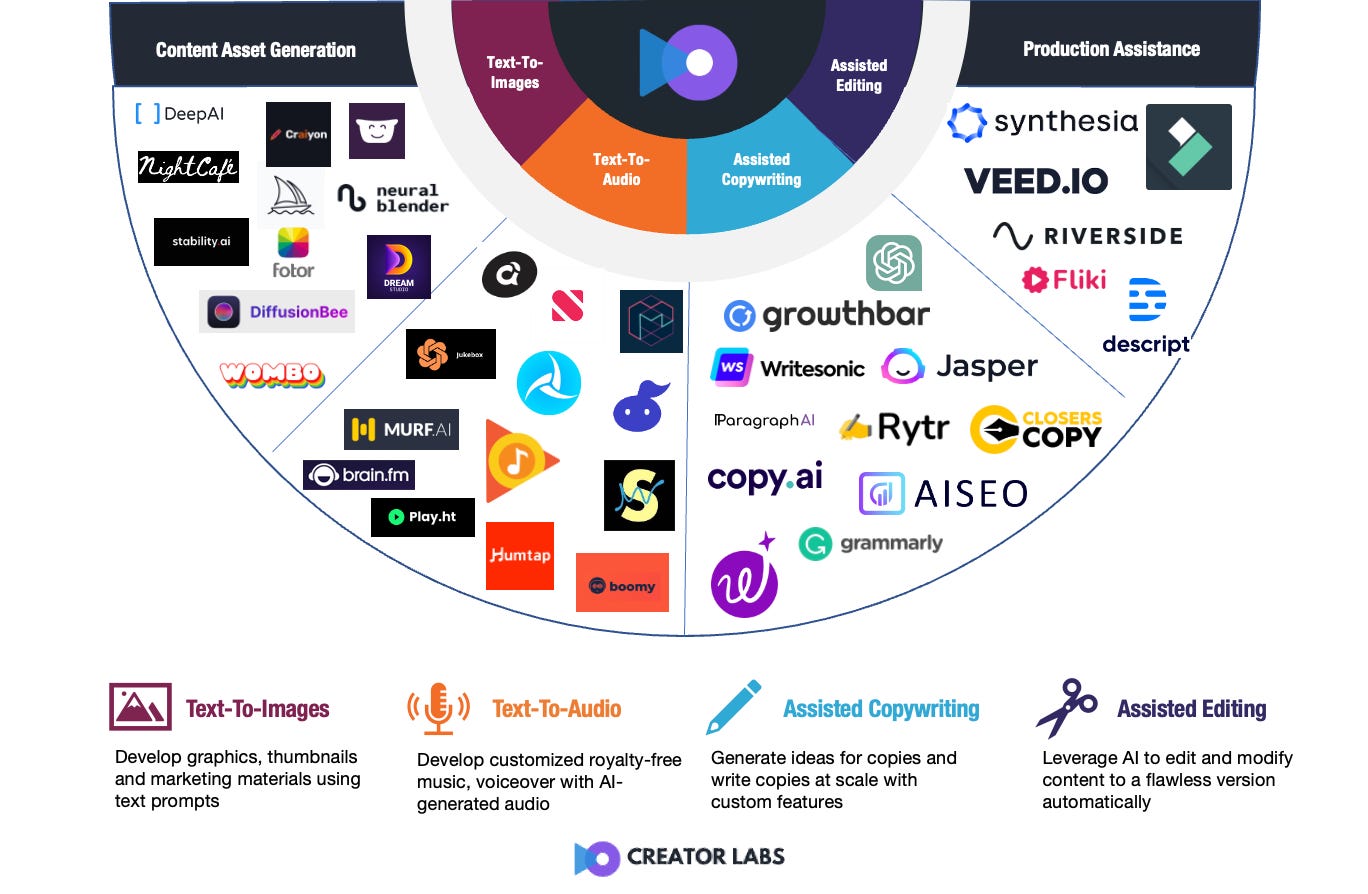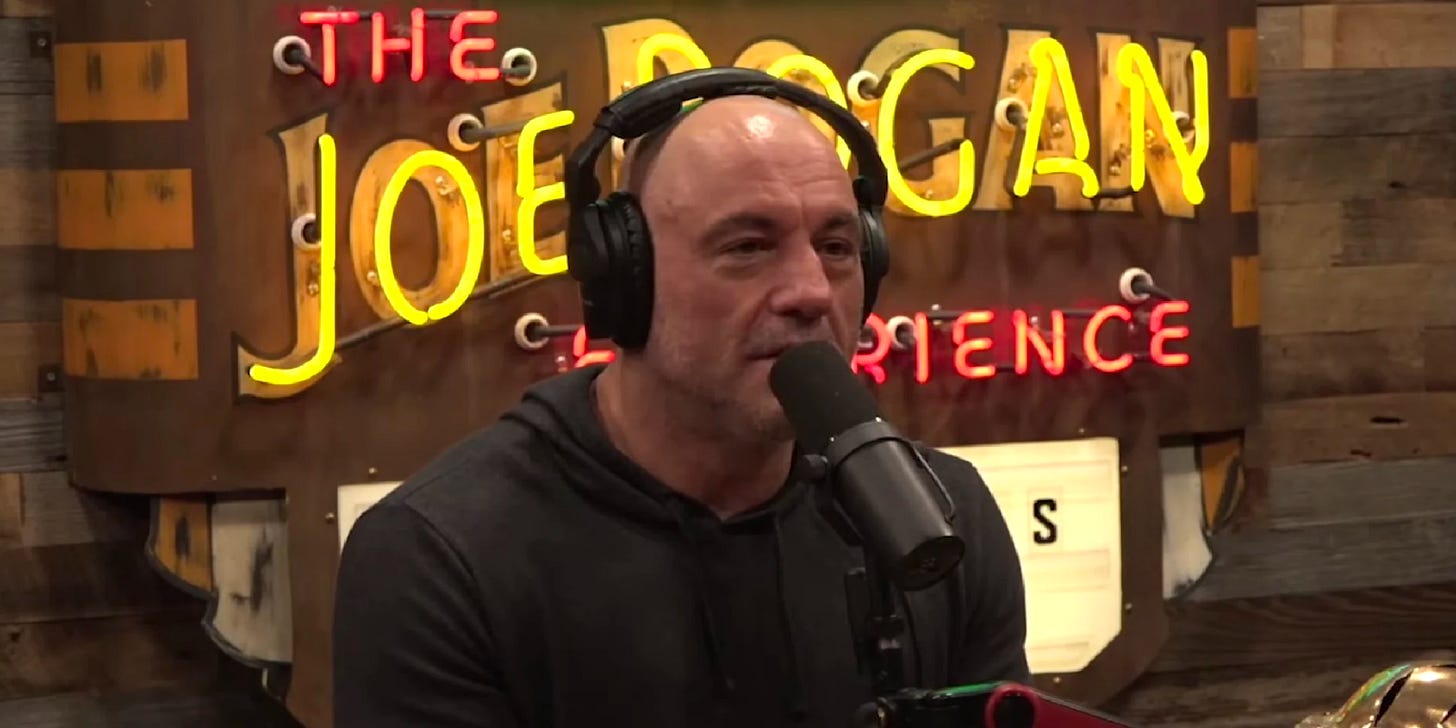What does the artificial intelligence breakthrough and adoption mean for the creator economy?
This is the question I asked myself in December of last year when I first tried using ChatGPT for the first time. ChatGPT provides ideas, solutions, and scripts for anything the users ask for, and it took them 2 days to reach 100 MAUs, surpassing TikTok, Instagram, Uber, etc. Buzzfeed publicly announced that they would use ChatGPT to help create content, and wall street was fascinated with the idea.
In this essay, I hope to address the questions about AI on the creator economy in a few points:
What are AI use cases creators can take advantage of
The barrier to entry for creators/entrepreneurs is getting lower and lower
Reputation risk associated with deep fakes
Before diving in, remember that artificial intelligence has a compounding growth curve driven by lower computing costs and data availability (similar to Moore’s Law) - the inputs it takes to train large datasets. The AI-generated images/audio/video will improve much faster than we think.
What are AI use cases creators can take advantage of?
ChatGPT has served as a great sounding board for creators to brainstorm new video ideas, new titles and draft emails for business communications, but it is only the tip of the iceberg.
Artificially intelligence can be used in many parts of a creator’s production process, from pre-production (brainstorming, scripting) to post-production (editing, posting). There are dozens of startups building to provide creators with more AI-enabled support to help them create higher quality content with less time. I have broadly classified into four categories: (i) Text-To-Images, (ii) Text-To-Audio, (iii) Assisted Copywriting, and (iv) Assisted Editing.
Text-To-Images & Text-To-Audio
The ability to convert text into image and audio assets is immense to creators. Images can be fitted to creating thumbnail backgrounds, article titles, memes, and graphics. Remember how Figma and Canva created a platform where people could create creative assets without design backgrounds? The introduction of text-to-images pushes it even further. Creators can now generate assets without the sophistication of creating one. It allows creators to focus on their craft and have tools like Midjourney to alleviate their workload on creating media assets. Even the owner of the most used video-editing software Premiere Pro, Adobe has launched a Text-To-Image feature named FireFly.
Text-To-Audio is also incredibly sophisticated. In this context, audio can be categorized into music and speech. Tools like soundraw allow creators to generate music from scratch, and tools like Murf.ai allow creators to generate voiceover clips by inputting a script. These are significant innovations with complicated implications for royalty-free platforms like Epidemic Sound and hundreds of Fiiver freelancers who help do voiceovers (don’t believe me? Check it here). With these tools, creators can create better videos with more image and audio options at a lower price in less time. As a result, it helps creators perform better and lowers the entry barrier to someone who might not have the skills to find royalty-free music and photoshops.
Assisted Copywriting & Assisted Editing
The earliest version of assisted copywriting is Grammarly. Grammarly scans your text inputs and provides suggestions to improve your grammar and word choices. Grammarly trains itself with billions of articles to learn what makes an excellent article and what flawless grammar is. However, tools like Copy.ai’s Blog Post Wizard and ChatGPT took it five steps ahead. They can provide ideas, prompts and suggestions to questions rather than editing your paragraphs. It is particularly helpful for video scripting at the ideation phase and creating titles for your videos because these AI tools can give you initial ideas to improvise.
Before the AI tools were invented, there weren’t many editing assistance tools that creators use. It mostly boils down to templates and filters. However, the introduction of AI-assisted editing has posed a huge opportunity for creators to take advantage of. Tools like Descript is able to edit out the filler words “Ahhh, errrr” out from the audio clips and create short-form snippets from a long-form podcast audio file. Tools like Veed.io can auto-fill subtitles as the video plays, which saves lots of time from creators adding a text layer every 2-3 seconds on an 8+ minute video. Tools like Synthesia can translate language used in videos to distribute content internationally without hiring an agency or refilming the videos. These inventions will improve creators’ creative workflow and help them be more creative.
The barrier to entry for creators/entrepreneurs is getting lower and lower
Adopting AI has helped creators achieve two things: (1) Expand Knowledge, (2) Save Time.
Before the internet age, humans have to look for specific books and articles that contain the answers they are looking for. With the internet, there is an abundance of information where you can search for them. Today with artificial intelligence like AI, you can get a direct answer from ChatGPT rather than looking for it on Google. It is becoming more and more effortless, and that is what humans gravitate toward - we want answers delivered to us as fast and as easy as possible.
The best-trained Large-Language Model (LLM), like ChatGPT, can compute and retain information at a capacity no human can ever do. It can pass Law School exams, medical school licensing exams and achieve the 90th percentile on the SAT assessments while providing people with an 8-day travel itinerary in Japan and the recipe for Chinese-style barbecue pork.
So for a creator, AI can be a teacher to provide you with answers to the questions you have, AI can be an assistant to help improve your workflow in all aspects, AI can be your ideation partner to bounce ideas back and forth with from summarizing emails to researching a subject matter, to generating audio for your video to suggesting 10 title ideas to improvise. It is an incredible time to be an entrepreneur and/or creator because the barrier of entry is trending downwards.
Reputation risk associated with deep fakes
Deepfakes are going to be a problem. The ability to manipulate audio and video created a shaded opportunity for individuals leveraging deep fakes to exploit celebrities/artists. We have seen examples of “Trump in Prison” and “DeepTomCruise” which mainly were made for entertainment purposes. However, there are a few ways in how deep fakes can actually be dangerous if used wrongfully.
Fake endorsement
With examples of the Joe Rogan deepfakes, there are many examples of fake endorsements (e.g. reAlpha featuring fake Elon Musk). Without penalizing regulations, this phenomenon is likely going to continue in the future. The scary thing is - it will only get more real in the future.
Defamation & Misinformation
Wrongful use of AI can lead to misinformation. If one party weaponizes AI to create images of the opposition with the intention to defame them, it would do substantial damage to the person. One could also use it to spread misinformation that aligns with their objectives, whether if it means hurting a competitor, spreading a myth, or making fun of a group of people.
Conclusions
It is never been a more critical moment for regulators to step in and regulate the use of artificial intelligence commercially. Today, AI is debatably the single factor that has the capacity to change everything we do professionally and recreationally. It enables new ventures, and creator entrepreneurs to better compete with large corporations.
The question leaves to us is what does the end look like? There are optimists and pessimists of what the future of technology looks like, but there is one thing that is certain - technology is providing abundance to the world, there will be fewer jobs and creative work will be valued more.
This Month in the Creator Economy
TikTok MAU plateaued; CEO Shou Chew testified at the White House leaving many questions unanswered, Colin & Samir recommends creators to diversify
Susan Wojcicki stepped down as CEO of Youtube; Youtube signed live streaming deal with Coachella;
Spotify launched TikTok-like Swipe Feed; Spotify revealed partnerships with Collab, Creative Juice, Get Engaged Media, Golden Child, and Karat Financials
Prime Hydrations (Founded by Logan Paul / KSI) now sponsors the LA Clippers as the official sports drink company, after signing Arsenal and UFC
Creator Camp (Led by Chris Duncan, Ryan Ng and Joseph Bykov) held their 2nd season with Shopify, Northface, hosted influencers Elliot Choy, AmandaRachLee etc
Snapchat reached 750M MAUs, launched AI Chatbot flurry
Reddit is looking for an IPO
Social video analytics firm Tubular Labs was acquired by Chartbeat
Fortnite followed Roblox’s blueprint to allow players to create their own games
Top Startups You Should Pay Attention To
Nas.io (Extended Series A, Led by Lightspeed Ventures)
Nas.io is a second-layer community management platform for creators to communicate and engage with their audience across Youtube, Instagram, Twitter, Twitch, Discord, etc. Imagine Hubspot for marketers across different medial channels but for creators to engage with their fans across multiple platforms.
Creator Now (Seed Stage, Angels - Justin Kan, Colin & Samir, Casey Neistat)
Creator Now is a membership experience that connects you with the mentors, community, resources, and support you need to supercharge your path to becoming a full-time creator. Although communities are not as scalable as products, Creator Now solves a huge pain point for creators - feedback on their creator crafts and connections to a very lonely pursuit.
Veed.io (Series A, Led by Sequoia Capital)
Veed.io is an all-in-one video editing platform with an easy-to-use system for less sophisticated users compared to Adobe Premiere Pro and FinalCutProX. Features such as auto-generated subtitles, motion graphics and stock video/audio library have centralized the creative workflows for an individual. The effects are similar to how the invention of Canva and Figma have expanded the graphic market beyond sophisticated Photoshop users.














